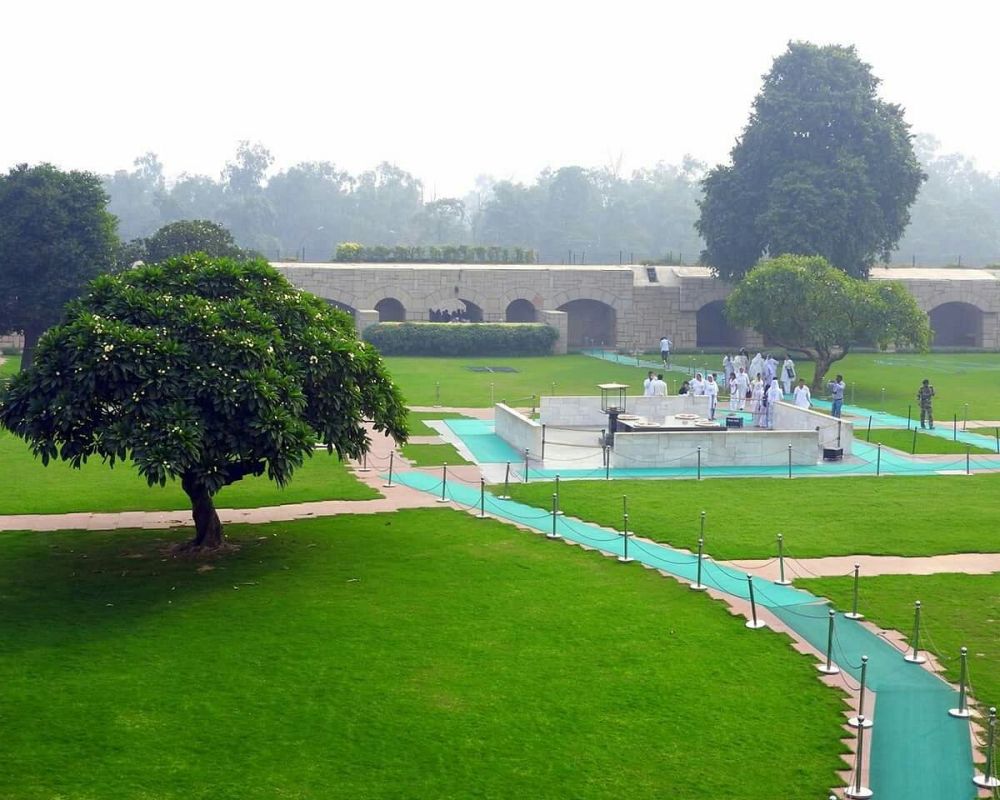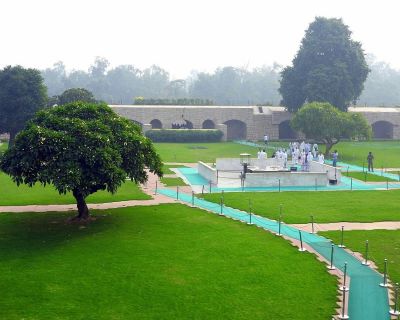

Raj Ghat is a serene and solemn spot where Mahatma Gandhi, the Father of the Nation, was cremated on January 31, 1948, a day after his assassination. This memorial to Gandhi is marked by a simple black marble structure that stands at the spot of his cremation. Visitors come from all around the world to pay their respects to this great leader who championed the cause of peace and non-violent resistance. An eternal flame burns at one end, and the lush green gardens surrounding the monument provide a peaceful ambiance. As you walk through the well-maintained pathways, you'll notice inscriptions of Gandhi's quotes and the exact spot where he was cremated. The memorial also has a museum dedicated to Gandhi's life and teachings, which is both educational and inspiring. It's a place that invites contemplation and reflection on the values of simplicity and humility that Gandhi embodied.
Located near Raj Ghat, the National Gandhi Museum offers an in-depth look at the life and times of Mahatma Gandhi. It houses personal relics, books, journals, and documents related to Gandhi's life and the Indian freedom struggle. You can explore a vast photographic collection that vividly narrates the historical events of the era and gain insight into Gandhi's philosophy and his emphasis on non-violence. Exhibits include items such as his spinning wheel, spectacles, and the dhoti he wore when he was assassinated. There are also letters and other personal items on display. Multimedia presentations and a library present an engaging learning experience. A visit to the museum is not just a tour through a historical site but an educational journey that enlightens visitors about the immense contribution of Mahatma Gandhi to India and the world.
For photography enthusiasts and historians alike, a contemplative walk at Raj Ghat can be a fulfilling activity. The expansive and manicured lawns, with the Yamuna River as a backdrop, provide a perfect setting for photography. Capture the understated elegance of the marble platform, the eternal flame, and the peaceful surrounding gardens. You will have the opportunity to photograph the poignant scenes of visitors paying homage to Mahatma Gandhi at his final resting place. Complement your photoshoot with moments of quiet reflection sitting by the tranquil gardens, giving yourself a chance to connect with the historical significance and natural beauty of the site. Additionally, the walkways leading to the Gandhi Memorial are lined with trees and a variety of birds, making it an attractive site for nature photography.
Prayer meetings are regularly held at Raj Ghat to commemorate Mahatma Gandhi and his teachings of peace and non-violence. These gatherings are especially poignant on Fridays (the day he was assassinated) and on his birth (October 2) and death anniversaries. Visitors are welcomed to join the multi-faith gatherings as different religious prayers are recited, reflecting Gandhi's belief in the universal truth and harmony among different faiths. The serene atmosphere and the collective focus on peace elevate the spiritual experience. Such prayer meetings provide visitors with a unique opportunity to participate in a traditional Indian ritual while also paying homage to a global symbol of peace. It's a time for reflection and remembrance, a communal acknowledgement of Gandhi's legacy that influenced so many lives across the world.
The area around Raj Ghat is rich with history, and a guided tour can help visitors discover the various memorials and sites of interest. These include the memorials of Jawaharlal Nehru, Indira Gandhi, Lal Bahadur Shastri, and other leaders that are situated nearby. Spaces like Shanti Van, Shakti Sthal, and Veer Bhumi are some of the other notable memorials that can be visited. A knowledgeable guide can offer insights into each leader's life and their contribution to India's independence and post-independence era. The tour can also include a walk along the banks of the Yamuna River, providing a natural respite from the bustling city of Delhi. A guided tour can enhance the visit by providing historical context, anecdotes, and detailed narratives that might not be readily available to independent travelers.
